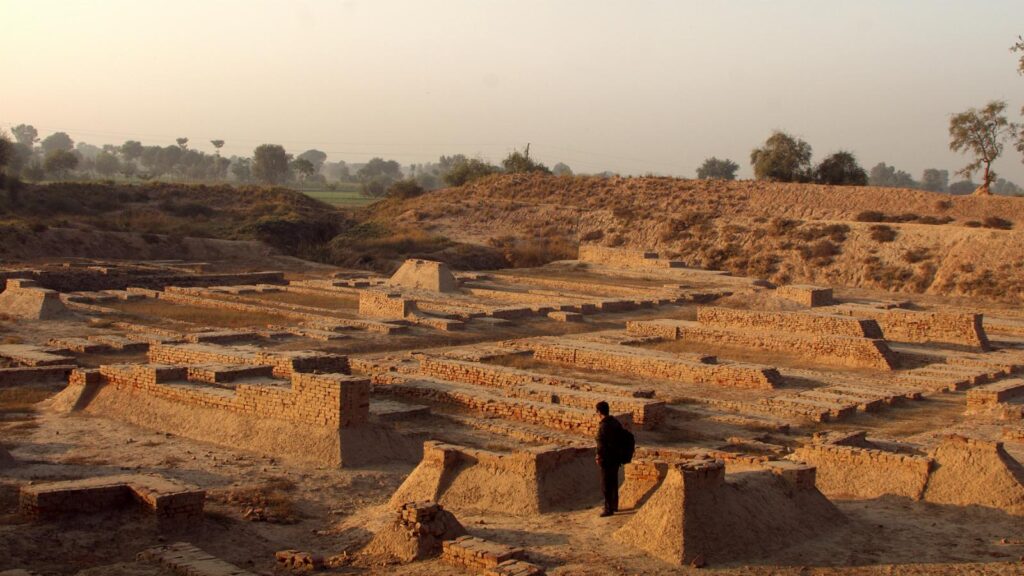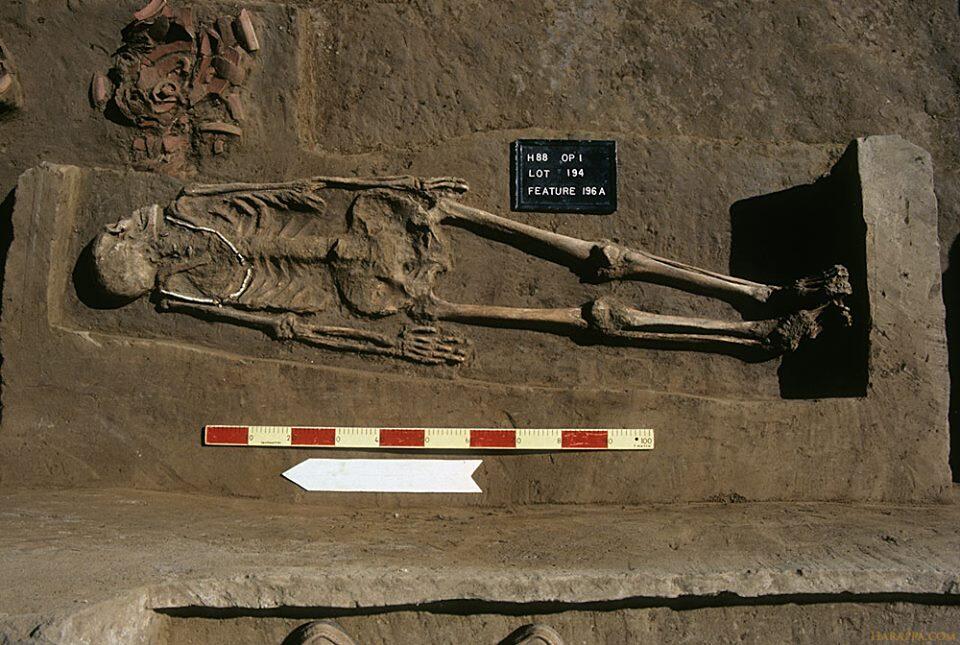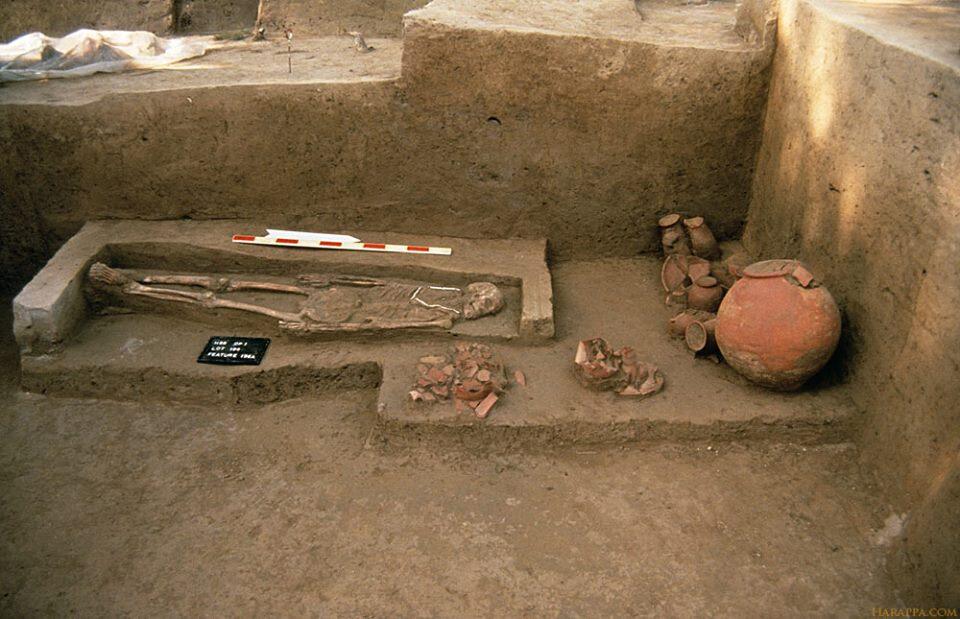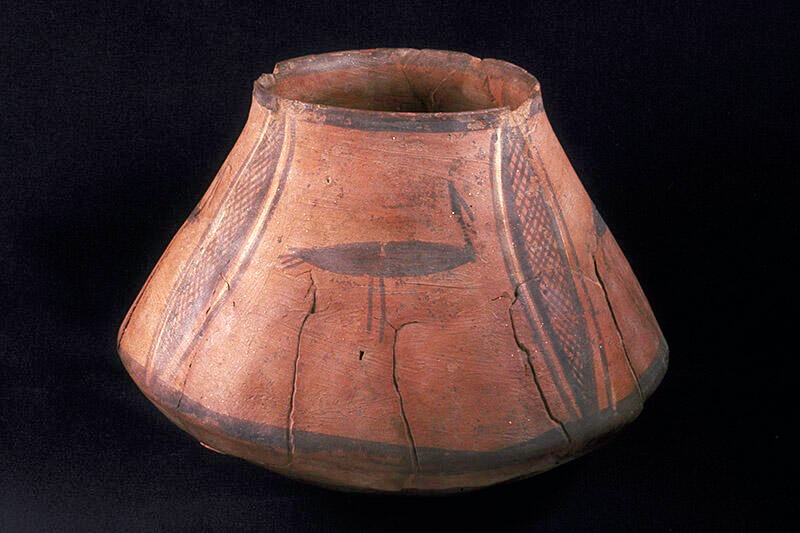ហារ៉ាផាន (Harappan) គឺជាវប្បធម៌ចំណាស់មួយក្នុងចំណោមបណ្តាវប្បធម៌ និងអរិយធម៌ដទៃទៀតនៅលើពិភពលោក។ វប្បធម៌នេះមានទីតាំងស្ថិតនៅក្នុងតំបន់នៃអរិយធម៌ឥណ្ឌូស ដែលនៅចន្លោះ ទន្លេឥណ្ឌូស និងទន្លេ Ghaggar-Hakra។ វប្បធម៌មានការរីកចម្រើនយ៉ាងខ្លាំងនៅភាគខាងលិចនៃឧបទ្វីបឥណ្ឌា ដែលបច្ចុប្បន្នស្ថិតនៅចន្លោះប្រទេសប៉ាគីស្ថាន និងឥណ្ឌា។ ចំពោះឈ្មោះ ហារ៉ាផាន ឬ ហារ៉ាប៉ា កើតចេញឡើងនៅពេលដែលអ្នកស្រាវជ្រាវបានរកឃើញនូវតំបន់ស្ថានីយបុរាណវិទ្យានៅក្នុងតំបន់ នៃទន្លេឥណ្ឌូស នៅឆ្នាំ១៩២១។ ចាប់ពីឆ្នាំ ១៩៥០មក ការសិក្សាលើវិសាលភាពនៃវប្បធម៌ហារ៉ាផានមានកាន់តែច្រើន និងមានការកំណាយដើម្បីស្វែងយល់ និងរកអំពីទីក្រុងសំខាន់នៅក្នុងវប្បធម៌ហារ៉ាផានជាបន្តបន្ទាប់។ តាមរយៈទិន្នន័យដែលបានបង្ហាញខាងលើ និងបានមកពីកាបូន១៤ បានបង្ហាញអំពីកាលបរិច្ឆេទនៃវប្បធម៌នេះ គឺចាប់ពី ឆ្នាំ២៦០០ ទៅឆ្នាំ ១៩០០ មុនគ.ស. និងបែងចែកជាបីសម័យកាលផ្សេងគ្នា គឺសម័យកាលមុនហារ៉ាផាន (៣៥០០ឆ្នាំ ទៅ២៦០០ឆ្នាំ មុនគ.ស.) សម័យហារ៉ផាន (ឆ្នាំ ២៦០០ រហូតដល់ឆ្នាំ ១៩០០ មុនគ.ស. និងសម័យកាលក្រោយហារ៉ាផាន (ឆ្នាំ ១៩០០ ទៅ ឆ្នាំ ១៤០០ មុនគ.ស.)។ តាមរយៈការស្រាវជ្រាវខាងលើចំនួនទីតាំងស្ថានីយនៃវប្បធម៌ហារ៉ាផាន កើនឡើងមានប្រមាណជាង១០០០ទីតាំង ដែលមានកាលបរិច្ឆេទចាប់ពី ឆ្នាំ ២៦០០ រហូតដល់ឆ្នាំ ១៩០០មុនគ.ស.)។ ក្នុងចំណោមនោះ មានស្ថានីយប្រមាណ៤០០ស្ថិតក្នុងទឹកដីនៃប្រទេសប៉ាគីស្ថាន និងជាង៦១៦ ស្ថិតក្នុងប្រទេសឥណ្ឌា ។

ប្រភព៖ https://www.khanacademy.org
ក្នុងចំណោមស្ថានីយទាំងនោះ ឌុលវីរ៉ា (Dholavira) គឺជាទីក្រុងដ៏សំខាន់ជាងគេនៅក្នុងវប្បធម៌ហារ៉ាផាន បច្ចុប្បន្នស្ថិតនៅក្នុងរដ្ឋ ហ្គូចារ៉ាត ក្នុងប្រទេសឥណ្ឌា។ តាមរយៈកំណាយបុរាណវិទ្យាបានបង្ហាញឱ្យឃើញពីការរៀបចំទីក្រុង ឌុលវីរ៉ា បានបង្ហាញថា ទីក្រុងនេះមានកំពែងដីលើកព័ទ្ធជុំវិញ មានសំណង់សាធារណៈដូចជាអណ្តូងទឹក អាងទឹក ប្រព័ន្ធបង្ហូរទឹក ផ្ទះប្រជាជន និងមានផ្លូវស្របតាមអក័្សបណ្តោយថ្ងៃ ទទឹងថ្ងៃមនុស្សក្នុងសម័យអរិយធម៌នេះត្រូវបានគេកត់សម្គាល់ថា មានបច្ចេកទេសខ្ពស់ ដែលមានប្រព័ន្ធធារាសាស្រ្ត ហេដ្ឋារចនាសម្ព័ន្ធផ្សេងៗ។ គួរបញ្ជាក់ដែរថា មុននៃការរកឃើញឌុលវីរ៉ា ទីក្រុងទាំងនេះ គឺកប់នៅក្រោមដីជ្រៅ ទើបនៅឆ្នាំ ១៩៦៨ ដែលមានអ្នកស្រាវជ្រាវបានកំណាយ និងសង្គ្រោះទ្បើងវិញ បន្ទាប់មកអ្នកស្រាវជ្រាវបានបន្តការងារសិក្សារហូតដល់ឆ្នាំ ២០០៥។ ទិន្នន័យនៃការកំណាយត្រូវបានអ្នកស្រាវជ្រាវចាត់ទុកថា ជាទីក្រុងចំណាស់ជាងគេនៅក្នុងតំបន់អាស៊ីខាងត្បូងនេះ ដែលមានអាយុកាលប្រហែលជាកកើតនៅប្រមាណ ២០០០ឆ្នាំ មុនគ.ស។ ចំពោះការគោរពប្រតិបត្តិសាសនា និងអក្សរវិញ យើងពុំបានដឹងច្បាស់លាស់នោះទេ គ្រាន់តែតាមរយៈការរកត្រាដែលមានអក្សរ និងមានរូបសត្វផ្សេងៗ ដែលអ្នកស្រាវជ្រាវគិតទំនងជាអានពីស្តាំទៅឆ្វេង ដែលដូចនឹងភាសាក្នុងអម្បូរ ឥណ្ឌូ-អឺរ៉ុប និងឥណ្ឌាខាងត្បូង។

ប្រភព៖ https://whc.unesco.org និង https://www.tripiwiki.com/

ប្រភព៖ https://whc.unesco.org និង https://www.tripiwiki.com/

ប្រភព៖ www.harappa.com

ប្រភព៖ www.harappa.com

មនុស្សក្នុងអរិយធម៌នេះ មានជំនាញក្នុងការផលិតវត្ថុសិល្បៈ តាមទម្រង់ផ្សេងៗដែលបានរកឃើញពីកន្លែងជាច្រើននៃអរិយធម៌នេះរួមមានរូបចម្លាក់ត្រា គ្រឿងស្មូនដី គ្រឿងអលង្ការ រូបចម្លាក់ដី អំពីថ្ម លោហៈធាតុ និងអំពីដីឥដ្ឋជាដើម។ សរុបមកវប្បធម៌នេះ មានការរីកចម្រើនចន្លោះ ឆ្នាំ ២៦០០ មុនគ.ស. រហូតដល់ឆ្នាំ ១៩០០មុនគ.ស. និងនៅប្រហែលឆ្នាំ១៧០០មុនគ.ស. ទីក្រុងនៃវប្បធម៌នេះ ត្រូវបានគេបោះបង់ចោល គឺប្រហែល មកពីកត្តាជាច្រើនដែលធ្វើឲ្យវប្បធម៌មួយនេះធ្លាក់ចុះ រួមជាមួយនឹងតំបន់អរិយធម៌ឥណ្ឌុស ពោលមានដូចជាការបញ្ចប់ពាណិជ្ជកម្មជាមួយមេសូម៉ូតាមី និងអេហ្ស៊ីប កត្តាសង្គ្រាម និងជាពិសេសកតា្តធម្មជាតិដែលទឹកទន្លេឥណ្ឌូស និងទន្លេ Ghaggar-Hakra ស្ងូត ដែលធ្វើឲ្យខ្វះប្រភពទឹកក្នុងជីវភាពរស់នៅប្រចាំថ្ងៃ៕
——————————-
Harappan Culture
Harappan is one of the oldest cultures and civilizations in the world. This culture is located in the area of the Indus civilization, between the Indus River and the Ghaggar-Hakra River. Culture flourished in the western part of the Indian subcontinent, now between Pakistan and India. The name Harapphan or Harappa originated when researchers discovered an archeological site in the Indus River area in 1921. Since the 1950s, the study of the sweep of Harappan culture has increased and there has been a series of excavations to explore and discover important cities in Harappan culture. Based on the data presented above and from carbon 14 shows the date of this culture is from 2600 to 1900 BC and is divided into three different periods: the pre-Harappan period (3500 to 2600 BC), the Harappan period (2600 to 1900 BC and the post-Haraphan period (1900 to 1400 BC). According to the above research, the number of Harappan cultural sites increased to more than 1000 sites, dating from 2600 to 1900 BC. Some of these sites, there are 400 sites in Pakistan and more than 616 in India.
Dholavira is one of the sites above and is the most important city in the Harappan culture, now in the state of Gujarat in India. Based on, archaeological excavations have revealed the urban planning of Dulvira, which is surrounded by earthen ramparts and public constructions such as wells, reservoirs, drainage systems, houses, and roads. People in this civilization were noted to have high technology with irrigation and various infrastructures. It should be noted that before the discovery of Dholavira, this city was buried underground and it was excavated and rescued by researchers in 1968, then researchers continued to study until 2005. According to the excavation data, this city is considered by researchers to be the oldest city in South Asia, dating to about 2,000 BC. As for the observance of religion and script, we do not know for sure, only by finding seals with letters and animal figures that researchers think are likely to read from right to left, similar to the languages of Indo-European and South India.
People in this civilization specialize in the production of art objects in various forms found in many places of this civilization, including seals, jewelry, and earthenware sculptures made from stone, metal, and clay. In conclusion, this culture flourished between 2600 BC to 1900 BC, and around 1700 BC the city of this culture was abandoned due to many factors that caused this culture to decline including the Indus civilization, such as the end of trade with Mesopotamia and Egypt, war factors and especially natural factors that the Indus and Ghaggar-Hakra rivers are depleted, leading to a lack of water resources in daily life.
អត្ថបទដោយ៖ លោក អេង តុលា






